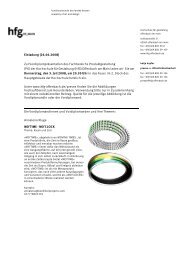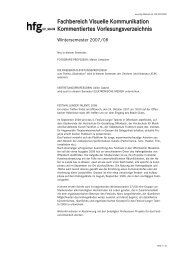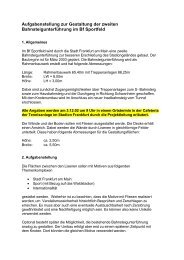User Manual
User Manual
User Manual
You also want an ePaper? Increase the reach of your titles
YUMPU automatically turns print PDFs into web optimized ePapers that Google loves.
Menu charts – general<br />
Throughout this manual you will find charts to explain the steps<br />
and procedures required to alter the various settings. These<br />
charts are laid out to graphically illustrate in a simple manner<br />
how to navigate through the menus. While they include all the<br />
information that would be presented on the display relevant to<br />
that section, they cannot illustrate all the possible combinations<br />
of the various symbols seen on a screen at one time as that would<br />
be impractical and too confusing. If you are familiar with mobile/<br />
cell phone menus, for example, then the design of the layout and<br />
working practice will not be unfamiliar.<br />
You should find that, in practice, working your way through a<br />
menu on the camera is a good deal simpler and more obvious<br />
than the written explanation implies!<br />
In the descriptions, various terms are used regarding menu navigation.<br />
Menus have ‘trees’, for example, which describes their imaginary<br />
graphical layout where you could trace a navigational<br />
path along its ‘branches’. Each new section, or stopping off point<br />
on the branches, seen on the display is called a ‘screen’. Therefore<br />
a screen is the graphical display of where you are on the menu<br />
and represents the current state of settings.<br />
Symbols used in the charts<br />
F<br />
R<br />
MENU<br />
ISO/WB<br />
Enter<br />
AF<br />
On<br />
Use front control wheel<br />
(direction depends on user setting)<br />
Use rear control wheel<br />
(direction depends on user setting)<br />
Press button or turn wheel<br />
MENU button on the grip<br />
Choose ENTER<br />
(by pressing ISO/WB button on grip)<br />
Choose ON<br />
(by pressing AF button on grip)<br />
13<br />
The H3D II features the advantage of multiple customization of<br />
settings. This means that your personal choice of settings, and<br />
thereby appearance of various combinations of symbols on the<br />
display at any time, will not necessarily be the same as many of<br />
the screens illustrated in this manual.<br />
To simplify the descriptions, reference is often made to a ‘main’<br />
or standard screen. Apart from default settings, there is no actual<br />
standard setting in the normal sense and therefore you create<br />
your own ‘standard’, which of course can be changed at any<br />
time.<br />
The ‘main’ screen is therefore the one you have currently created<br />
and is the one visible on the display when photographing (except<br />
where a particular mode is in actual operation, such as self-timer,<br />
for example).<br />
ISO/WB<br />
Save<br />
Choose Save<br />
(by pressing the ISO / WB button on<br />
grip) The new setting will be saved<br />
and chosen action can be carried<br />
out. Setting will be retained until<br />
changed.<br />
Functions in loop on menu<br />
A loop means that the available<br />
functions on that particular branch<br />
of the menu can be successively<br />
accessed in either direction of the<br />
control wheels without a break in<br />
flow. That is, you could turn the<br />
wheel clockwise or anticlockwise to<br />
arrive at the desired function.<br />
Main direction of path<br />
through menu<br />
The main path traces step-bystep<br />
the path that has to be taken<br />
through the various branches of the<br />
menu tree as they appear on the display<br />
to reach the relevant functions.



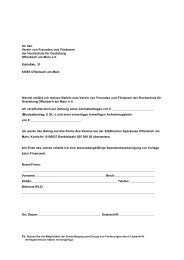
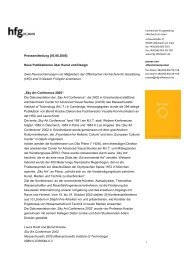


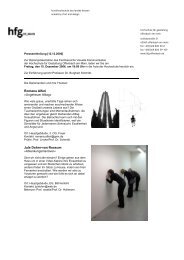

![Einladung [07.02.2006] - Hochschule für Gestaltung Offenbach am ...](https://img.yumpu.com/13375413/1/184x260/einladung-07022006-hochschule-fur-gestaltung-offenbach-am-.jpg?quality=85)

